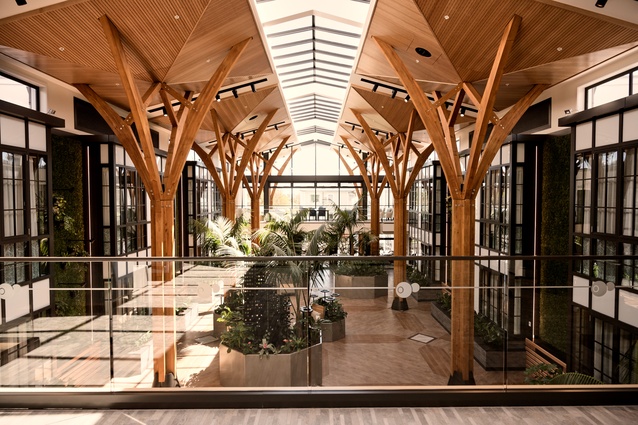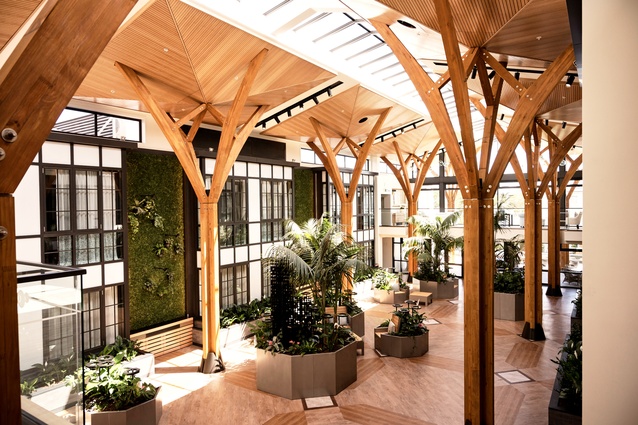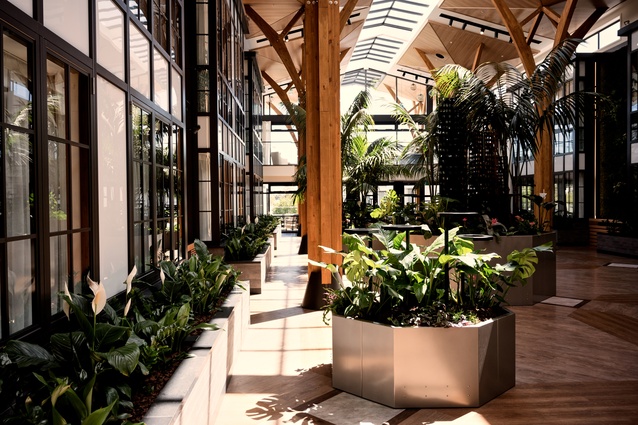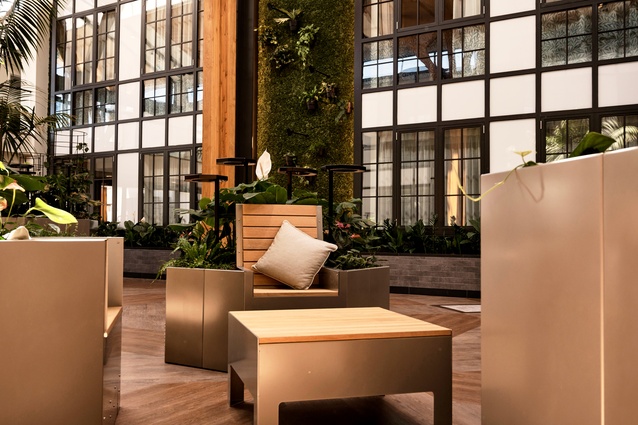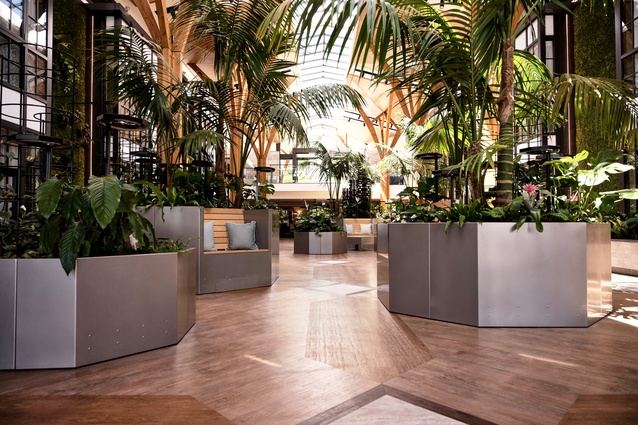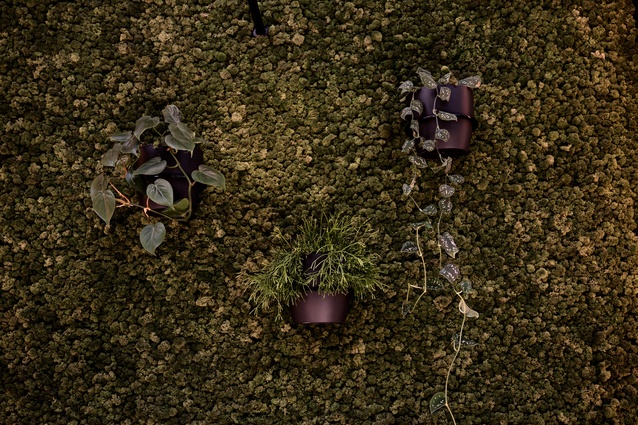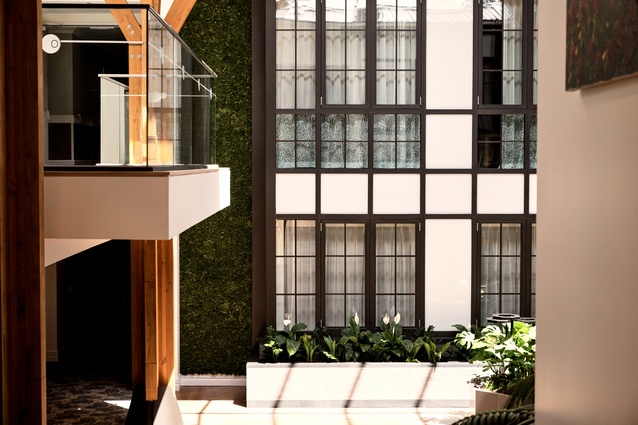Wintergarden wonderland: Rawhiti Estate
Partner content: Creators of custom interior greenery solutions, Outside In, tell us about the aesthetic and physical benefits of integrating planting into design.
One of the latest trends in architecture is integrated planting: designing objects, facades, furniture and materials to incorporate plants and greenery. Integrated planting considers not just the aesthetics of plants in a space but the interaction between nature and people – how we can experience, connect with and benefit from plants.
An outstanding example of this is Rawhiti Estate: a new premium, boutique retirement village in Auckland’s suburb of Remuera. Outside In was initially engaged to install large, costly living walls in the building’s expansive atrium. However, after viewing the space, the company realised that they could, instead, create a three-dimensional wintergarden – one that would create a true garden experience for residents to relax and interact in – for a similar outlay.
The inspiration for the space came from a traditional wintergarden: a conservatory devoted to the cultivation of winter-blooming plants. With residents in mind, we wanted the garden to seasonally change, emulating nature. For those who are unable to physically experience the garden, apartment rooms face out and overlook it, providing all the benefits of greenery from the comfort of home.
To build the space, Outside In needed to overcome several constraints including making the garden beds movable so that the atrium could be cleared and used for events. To overcome this, planter beds were custom-designed and manufactured; they appear to be fixed in place, but can actually lift up and roll out of the way on wheels.
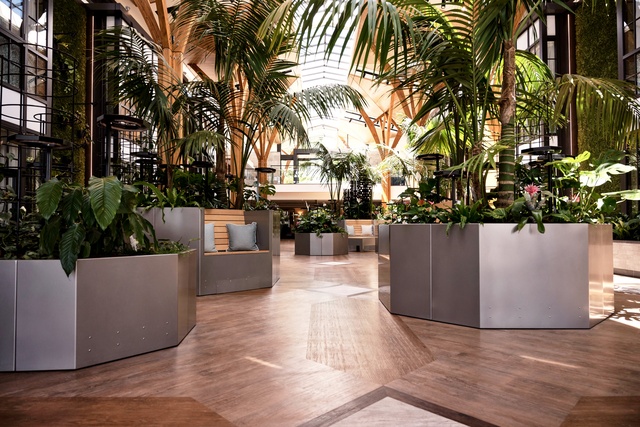
To create further interaction and make the garden a destination for residents, planters with built-in seating were created, with ergonomical design for the residents. Matching coffee tables were also used to create cosy sitting areas for relaxing with friends and family.
Another restraint was that the natural light levels were too low to sustain the flowering plants that were desired for the space. Outside In designed their own telescopic lights that sit in the planter beds to provide a boost for these light-loving plants. The light poles can be cleverly adjusted in height to accommodate the growing plants.
The wintergarden aslo features six huge moss and plant walls that grace the sides of the atrium, providing a stunning back drop. Plant rings are integrated into the moss and hold a variation of hanging and textural plants and wall mounted lights keep these plants healthy and happy.
The result is an impressive, nature-filled space where the interaction between plants and people is encouraged, supported and celebrated, and the benefits of integrating plants into design are clear to see in this project.
ArchitectureNow works with a range of partners to source appropriate content for the site. This article has been supported by Outside In.

